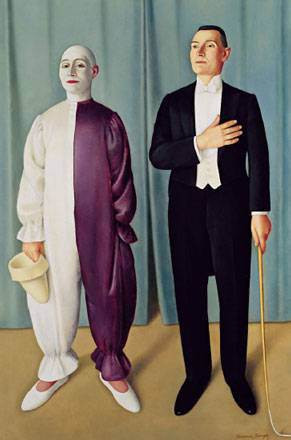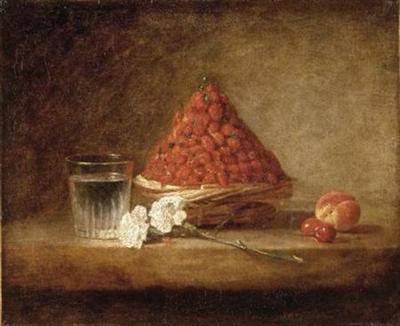
Paul Gauguin
Fatata te Miti (Near the Sea), 1892
oil on canvas
unframed: 67.9 x 91.5 cm (26 3/4 x 36 in.)
framed: 92.4 x 114.9 x 10.1 cm (36 3/8 x 45 1/4 x 4 in.)
National Gallery of Art, Washington, Chester Dale Collection

Paul Gauguin
Arii Matamoe (The Royal End), 1892
oil on coarse fabric
unframed: 47.9 x 74.9 cm (18 7/8 x 29 1/2 in.)
The J. Paul Getty Museum, Los Angeles

Paul Gauguin
Manao tupapau (The Spirit of the Dead Keeps Watch), 1892
oil on burlap mounted on canvas
framed: 92.1 x 113.03 x 6.35 cm (36 1/4 x 44 1/2 x 2 1/2 in.)
unframed: 72.4 x 97.5 cm (28 1/2 x 38 3/8 in.)
Albright-Knox Art Gallery, Buffalo, A. Conger Goodyear Collection, 1965
© Photo Credit: Albright-Knox Art Gallery / Art Resource, NY

Paul Gauguin
Mata Mua (In Olden Times), 1892
oil on canvas
framed: 118.5 x 94.5 x 9 cm (46 5/8 x 37 3/16 x 3 9/16 in.)
unframed: 91 x 69 cm (35 13/16 x 27 3/16 in.)
Carmen Thyssen-Bornemisza Collection, on loan at the Thyssen-Bornemisza Museum, Madrid
See larger image
Gauguin: Maker of Myth – the Art of Paul Gauguin shows in full bloom in Washington Nearly 120 works by Gauguin are exhibited in the first major look at the artist’s oeuvre in the United States since the blockbuster National Gallery of Art retrospective of 1988–1989, The Art of Paul Gauguin.
February 27–June 5, 2011
]]>
Source: National Gallery of Art, Washington
The exhibition reflects the remarkable breadth of Gauguin’s work with examples from every period (c. 1880–1903), medium (painting, watercolor, pastel, drawing, and prints, ceramic and wooden sculpture, and decorated functional objects), and genre (portraiture, still life, and landscape).
Gauguin: Maker of Myth is organized around the most significant themes that pervade his created myths: artist as creator, the quest for spirituality, the search for an earthly paradise (and discovery of a paradise lost), re-creation of the past, archetypal females, and religious commonalities. Gauguin’s myth-making drew from his own imagination as well as a wide range of European and non-Western sources, such as biblical literature, contemporary French poetry, Oceanic legends, Buddhism, and Hinduism. These themes interweave with one another throughout the exhibition, following Gauguin as he moved from one locale to another, explored different media, and as his knowledge of other cultures broadened.
Artist as creator: The exhibition opens with a series of powerful self-portraits, including Christ in the Garden of Olives (1889), Self-Portrait Vase in the Form of a Severed Head (1889), and the Gallery’s Self-Portrait (1889), which present Gauguin’s talent for role-playing as he adopts different identities of victim, saint, Christ-like martyr, sinner, and savage. Seen together, they suggest Gauguin’s portrayal of himself as a heroic artist in search of deeper truths.
Quest for spirituality: Religious stories and imagery permeate Gauguin’s work, but they appeared first in his Breton paintings. Deeply influenced by the intense spiritual atmosphere of Brittany, Gauguin responded with the experimental and highly personal Vision of the Sermon (Jacob Wrestling with the Angel) (1888)—the first of his works where color and space are radically different from reality. Despite rejections by the local clergy, Gauguin continued to depict the Passion, set amidst 19th-century Breton life, seen in The Yellow Christ (1889).
Earthly Paradise/Paradise lost: Lured to Tahiti in 1891 by reports of its unspoiled culture, Gauguin was disappointed upon arrival to discover the changes colonialism had brought to its capital of Papeete. Hoping to find a more authentic environment, he moved to the countryside and began painting the Tahiti of his dreams, replete with beautiful women, colorful flowers, and lush greenery—a world of tropical languor, the earthly Paradise he had hoped to find. Using titles rendered in Tahitian to emphasize a sense of exoticism and mystery, Gauguin poses questions through his art, as in the painting Aha oe feii? (What! Are You Jealous?) (1892).
Re-creating the past: The loss of ancient Polynesian culture deeply saddened Gauguin, who mourned the demise of a culture he never knew. Arii Matamoe (The Royal End) (1892) memorializes the death of the last Tahitian king, Pomare V, who died within days of Gauguin’s arrival in Tahiti. With the royal’s head dramatically displayed on a white cushion, the painting celebrates the “noble savage” and is a lament for the passing of an entire culture.
Confronted with the reality of disappearing Polynesian traditions, Gauguin turned to his art to re-create the gods, myths, and rituals that colonialism had replaced. He drew upon Western accounts of Tahitian culture, religious art of other cultures, and his own imagination to create sacred objects representing lost deities and religious practices, as seen in the relief carving Hina and Fatu (c. 1892), depicting a moon goddess and an earth god, and the painting of a temple ground in Parahi te Marae (There Are the Temple Grounds) (1892).
Archetypal females: Mythical females dominate much of Gauguin’s art. Taken from sources as diverse as Christian parables, Polynesian myths, German folklore, ancient Peruvian burial practices, Hinduism, Buddhism, and his own imagination, the women in Gauguin’s art are both seductive and destructive.
His Tahitian mistress served as a model for many of his works, most notably the famous Manao tupapau (The Spirit of the Dead Keeps Watch) (1892), where she is transformed into a recumbent Eve menaced by a ghostly spirit, or tupapau In Te Nave Nave Fenua (The Delightful Land) (1892), Gauguin again renders a Tahitian Eve, with her Garden of Eden transformed into a tropical forest, and the snake into a lizard. The monstrous female Oviri (“savage”), wholly constructed from Gauguin’s imagination, represents his imagining of crushingly powerful womanhood. Gauguin counted his stoneware sculpture Oviri (1894) among his most important works, requesting that it be placed on his tombstone.
Religious commonalities: Gauguin’s lifelong quest for spiritual harmony led him to look for connections among religions. In his art, Eastern and Western traditions intermingle, with Christianity freely mixing with Oceanic religions, Hinduism, and Buddhism. The subjects Gauguin approached, including creation, death, self-identity, dreams, and the longing for paradise, are addressed across different cultures. His beautiful, enigmatic compositions, such as Te Faaturuma (The Brooding Woman) (1892), Te Rerioa (The Dream) (1897), and Faa Iheihe (To Make Beautiful) (1898) have a contemplative quality; the questions they pose, like so much of Gauguin’s art, remain unanswered.
To learn more:
Gauguin: in the tropics
Article in theartwolf.com about the life and works of Paul Gauguin in Polynesia
Getty Museum acquires Arii Matamoe
Art news at theartwolf.com about the acquisition of a work by Gauguin exhibited at this retrospective
Follow us on:


